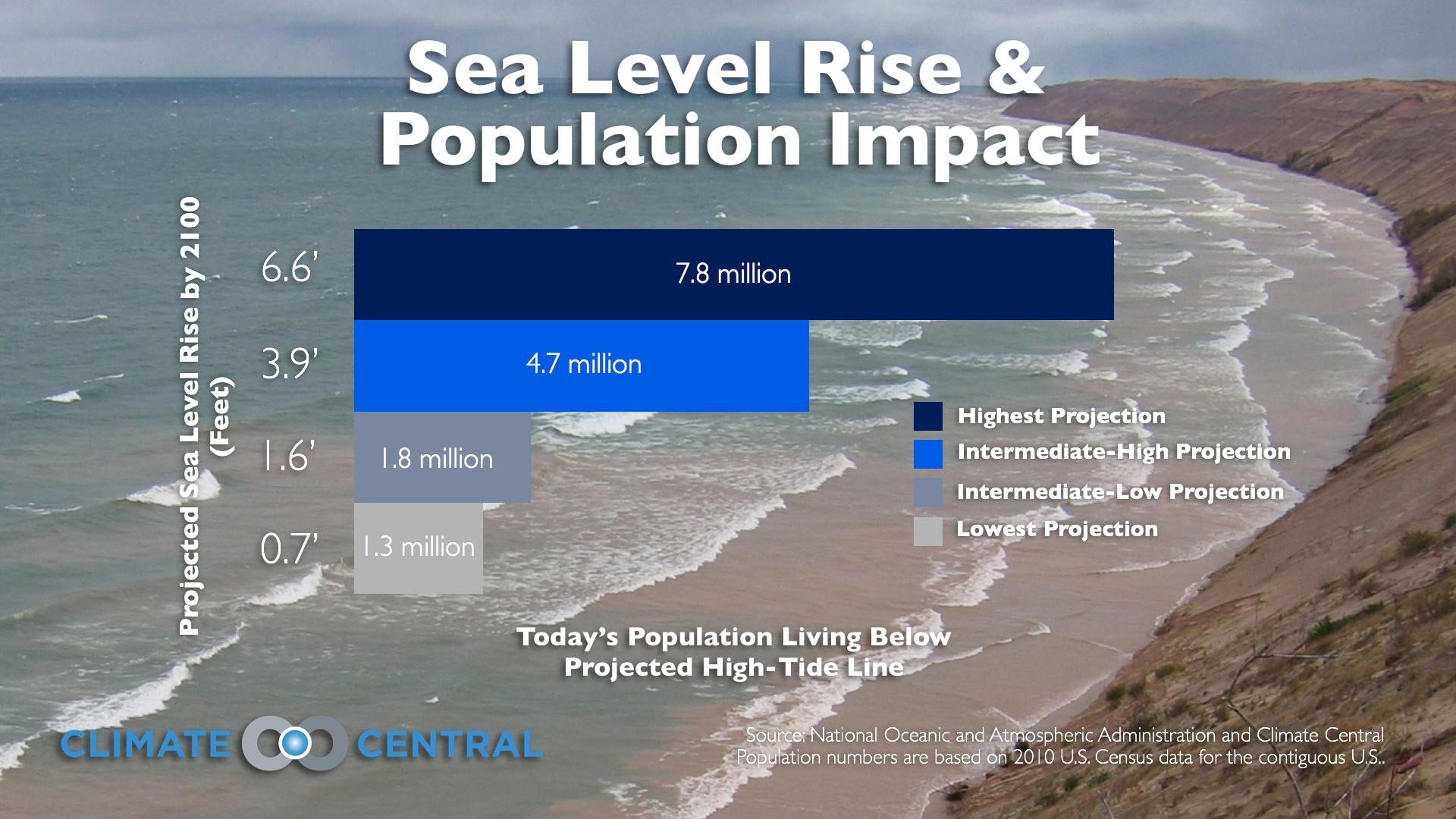Sea Level Rise: Urgent Action Needed To Protect Coastal Areas

Table of Contents
The Causes of Sea Level Rise
Several factors contribute to the alarming increase in global sea levels. Understanding these causes is crucial for developing effective strategies to combat this environmental crisis.
Thermal Expansion
Rising ocean temperatures are a primary driver of sea level rise. As the ocean absorbs heat from the atmosphere, due to increased greenhouse gas emissions from human activities (global warming), the water expands. This phenomenon, known as thermal expansion, contributes significantly to the overall rise in sea levels.
- Thermal expansion accounts for approximately 30-50% of observed sea level rise.
- The rate of thermal expansion varies across different ocean basins, with warmer regions experiencing greater expansion.
- The increased heat content of the ocean is a clear indicator of global warming and a potent driver of sea level rise.
Melting Ice Sheets and Glaciers
The melting of ice sheets in Greenland and Antarctica, along with glaciers worldwide, is another major contributor to rising sea levels. These colossal ice masses contain vast amounts of frozen water, and their accelerated melting significantly increases ocean volume.
- The Greenland ice sheet is losing mass at an alarming rate, contributing significantly to global sea level rise.
- The Antarctic ice sheet, while more stable overall, is experiencing significant melting in certain regions, with potential for dramatic future contributions.
- Glacial melt from mountains worldwide adds to the overall rise, impacting local sea levels and freshwater resources.
Groundwater Extraction
Human activities, particularly excessive groundwater extraction for agriculture and other uses, also contribute to sea level rise. As vast amounts of groundwater are pumped out, the land subsides, leading to a relative rise in sea level.
- Aquifer depletion, particularly in coastal regions, exacerbates the impacts of sea level rise.
- Land subsidence due to groundwater extraction is a significant factor in many coastal cities experiencing increased flooding.
- Sustainable groundwater management is crucial for minimizing this contribution to sea level rise.
Impacts of Sea Level Rise on Coastal Areas
The consequences of rising sea levels are far-reaching and devastating, impacting coastal communities and ecosystems worldwide.
Coastal Erosion and Flooding
Increased sea levels lead to more frequent and severe coastal erosion and flooding events. Higher high tides, storm surges, and increased wave action erode coastlines, damage infrastructure, and displace populations.
- Coastal flooding is already causing significant economic damage and displacing communities globally.
- Rising sea levels increase the vulnerability of coastal areas to storm surges, causing more devastating floods.
- Coastal erosion threatens vital infrastructure, including roads, buildings, and ports.
Saltwater Intrusion
Rising sea levels cause saltwater to intrude into freshwater aquifers, contaminating drinking water supplies and harming agriculture. This saltwater intrusion poses a significant threat to water security in many coastal regions.
- Saltwater intrusion contaminates freshwater sources, impacting drinking water supplies and agricultural productivity.
- Aquifer salinization makes it difficult to obtain potable water, forcing communities to rely on expensive desalination or alternative water sources.
- This issue particularly impacts vulnerable populations reliant on coastal aquifers for their water needs.
Loss of Habitats and Biodiversity
Rising sea levels threaten coastal ecosystems, causing habitat loss and biodiversity decline. Mangrove forests, salt marshes, and coral reefs – vital ecosystems providing numerous ecosystem services – are particularly vulnerable.
- Coastal habitats, like mangroves and coral reefs, are essential for biodiversity and coastal protection.
- Sea level rise leads to habitat loss, threatening numerous species, including endangered ones.
- The loss of these ecosystems has wide-ranging impacts on human societies and the global environment.
Mitigation and Adaptation Strategies to Combat Sea Level Rise
Addressing sea level rise requires a multifaceted approach incorporating both mitigation and adaptation strategies.
Reducing Greenhouse Gas Emissions
The most effective way to mitigate sea level rise is to drastically reduce greenhouse gas emissions. Transitioning to renewable energy sources, improving energy efficiency, and adopting sustainable land-use practices are crucial steps.
- The Paris Agreement sets global goals for emission reductions, but more ambitious action is needed.
- Individuals can contribute by reducing their carbon footprint through lifestyle changes and supporting sustainable businesses.
- Governments must implement policies to encourage the adoption of renewable energy and reduce reliance on fossil fuels.
Coastal Protection Measures
Various coastal protection measures can help protect vulnerable areas from the impacts of sea level rise. These include building seawalls, restoring coastal ecosystems like mangroves, and implementing managed retreat strategies.
- Seawalls offer physical protection, but they can be expensive and have ecological consequences.
- Restoring coastal ecosystems, such as mangroves, provides natural protection and enhances biodiversity.
- Managed retreat involves relocating communities and infrastructure away from vulnerable areas, a challenging but sometimes necessary solution.
Improved Planning and Development
Sustainable coastal zone management and development are crucial for minimizing the risks associated with sea level rise. This includes implementing stricter building codes, improving flood risk management, and promoting community engagement and education.
- Effective coastal zone management plans need to consider sea level rise projections and prioritize sustainable development.
- Investing in resilient infrastructure is essential for mitigating the impacts of sea level rise and protecting communities.
- Community involvement and education are critical for raising awareness and building resilience to the threats of rising sea levels.
Conclusion
Sea level rise is a serious and escalating threat to coastal communities and ecosystems worldwide. The causes are multifaceted, stemming from thermal expansion, melting ice sheets, and human activities like groundwater extraction. The impacts are devastating, leading to increased coastal erosion, flooding, saltwater intrusion, and habitat loss. Addressing rising sea levels requires immediate and concerted action from individuals, governments, and organizations. We must drastically reduce greenhouse gas emissions to slow the rate of sea level rise, while simultaneously implementing effective coastal protection measures and promoting sustainable coastal development. Let's work together to mitigate the effects of rising sea levels and protect our vulnerable coastlines, building a more resilient and sustainable future for generations to come.

Featured Posts
-
 Schandaal Prins Andrew Verjaardagskaarten Spionage En Geheime Ontmoetingen
May 11, 2025
Schandaal Prins Andrew Verjaardagskaarten Spionage En Geheime Ontmoetingen
May 11, 2025 -
 Jessica Simpsons Heartbreak Reflecting On Her Marriage
May 11, 2025
Jessica Simpsons Heartbreak Reflecting On Her Marriage
May 11, 2025 -
 Asian And Asian American Representation In Media A Call For Deeper Storytelling
May 11, 2025
Asian And Asian American Representation In Media A Call For Deeper Storytelling
May 11, 2025 -
 Keeping Tasmans Roads Open A Realistic Perspective From The Trucking Industry
May 11, 2025
Keeping Tasmans Roads Open A Realistic Perspective From The Trucking Industry
May 11, 2025 -
 Stock Market Today Trumps Tariff Threat And Uk Trade Deal Impact
May 11, 2025
Stock Market Today Trumps Tariff Threat And Uk Trade Deal Impact
May 11, 2025
